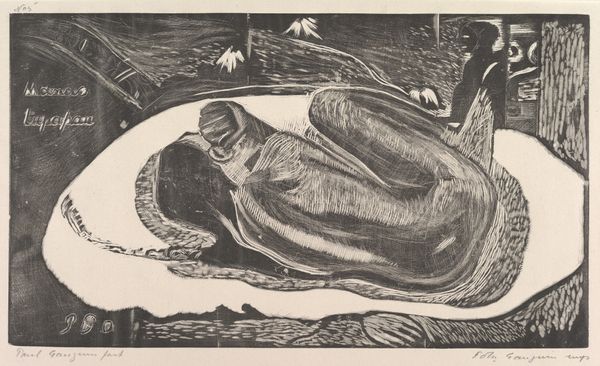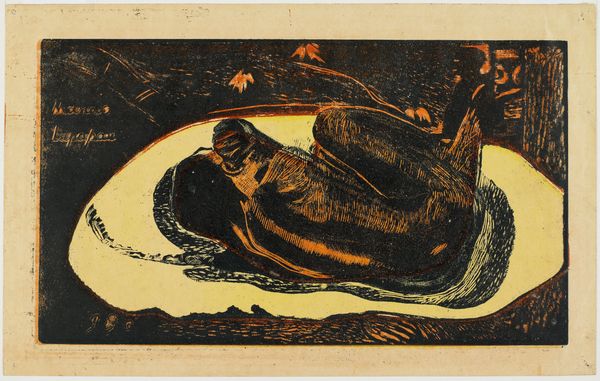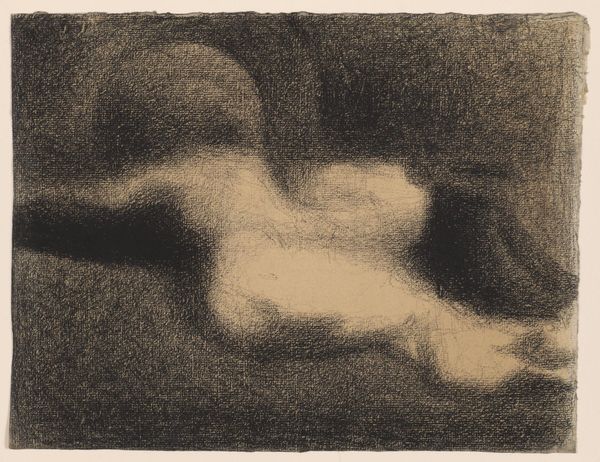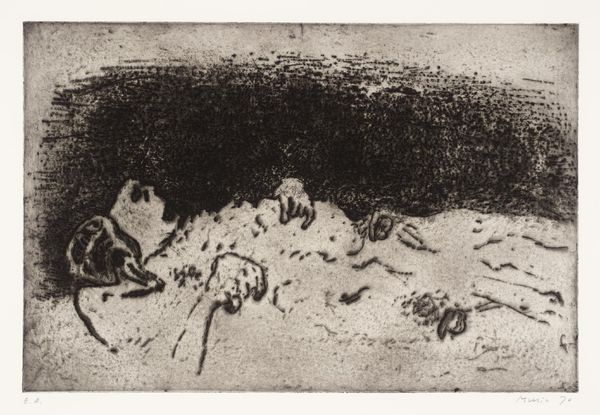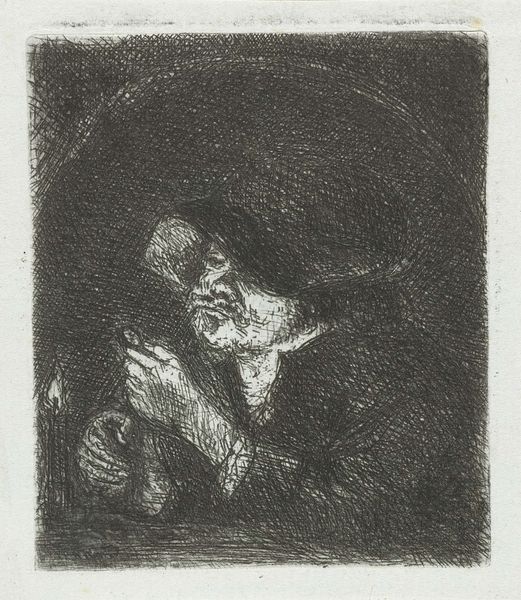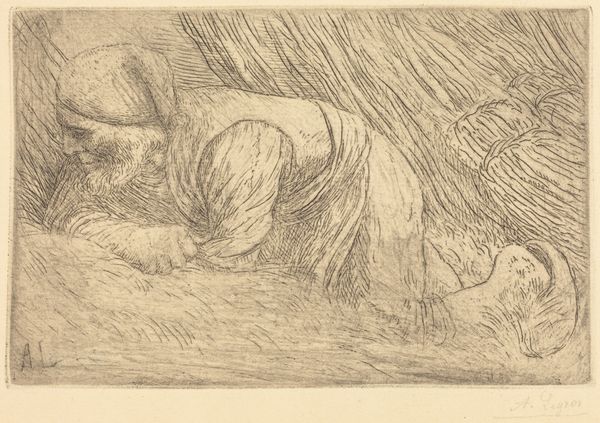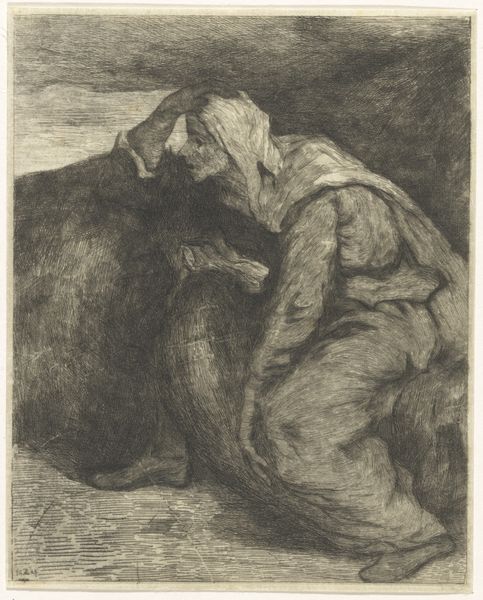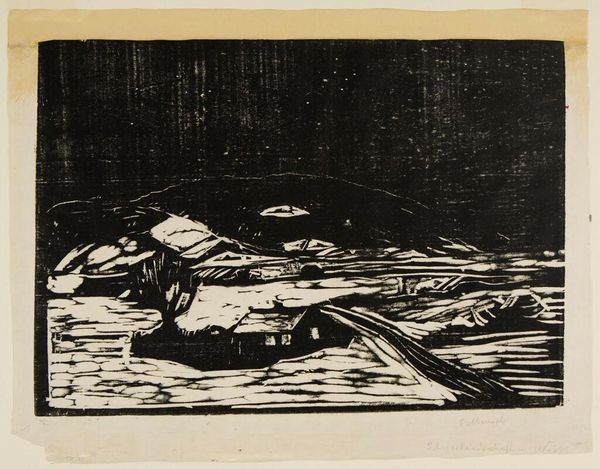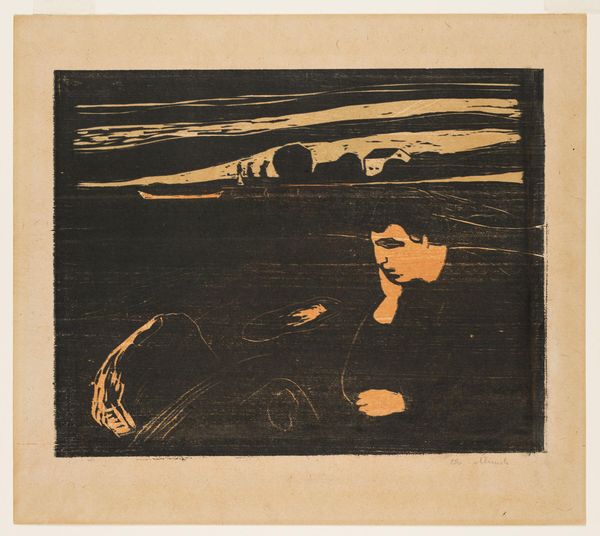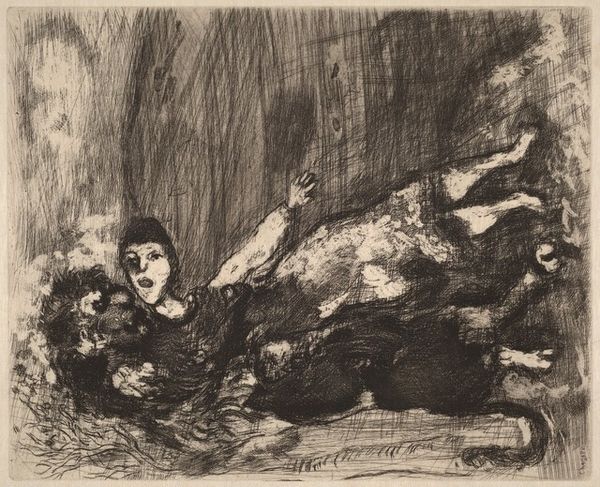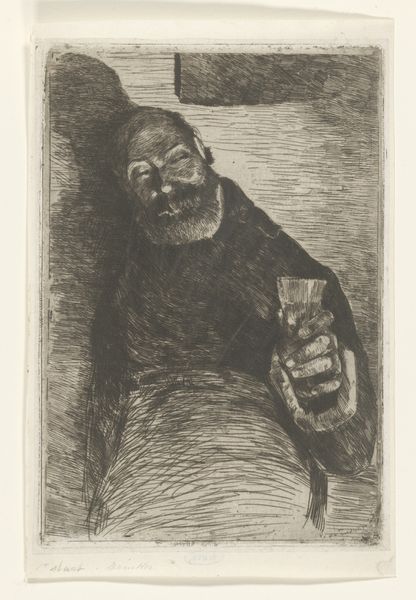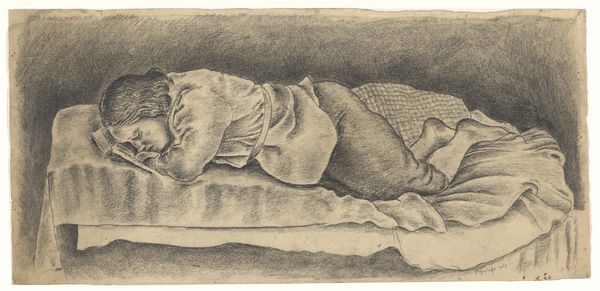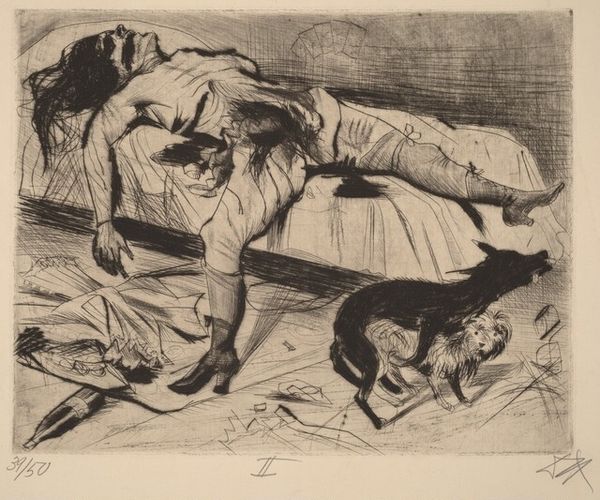
Dimensions: plate: 6 x 8 13/16in. (15.2 x 22.4cm) image: 3 7/8 x 7 5/8in. (9.8 x 19.4cm) sheet: 9 3/8 x 14 7/16in. (23.8 x 36.7cm)
Copyright: Public Domain
Curator: Edouard Manet's etching, "Dead Toreador," created around 1867-68, presents a stark and rather theatrical scene, currently held at the Metropolitan Museum of Art. Editor: My first thought is of darkness—that heavy, textured shade enveloping the figure. The composition immediately directs the eye to the fallen body, foreshortened and dramatic. Curator: Yes, that stark contrast enhances the tragic narrative. Bulls have had, for centuries, a key symbolic association with sacrifice, masculine potency, even a kind of solar energy in some cultural belief systems; therefore, those who die fighting these animals inherit part of that powerful identity. Here, though, all that symbolism is inverted, subverted. Editor: Absolutely, Manet utilizes strong diagonals in the figure's posture, guiding your vision across the composition and ultimately accentuating the passivity of death, and its encroachment upon vitality. Observe also the dark blacks are counterpoised against those paper-white slashes. It really enlivens this etching! Curator: He is playing with archetypes, dismantling the heroic ideal typically associated with bullfighting. The "corrida," in Spain, and among Spanish speakers elsewhere, has, historically, been loaded with significance relating to national identity. This figure lies defeated, an anti-hero perhaps reflecting broader anxieties. What might that commentary be? Editor: The textures! The artist has effectively employed hatching and cross-hatching to create tonal variation and depth in this composition, which seems almost modern, even abstract, when observed up close, in its play of line, contrast, and that limited palette of grey and black and white. Curator: It certainly resonates beyond its literal depiction of a fallen bullfighter, doesn't it? I read in that darkness, something ancestral; the cultural weight of ritual. How failure can overshadow symbolic continuity. Editor: Indeed! For me, it demonstrates the emotive power residing within an elegant arrangement of tone and line.
Comments
No comments
Be the first to comment and join the conversation on the ultimate creative platform.

